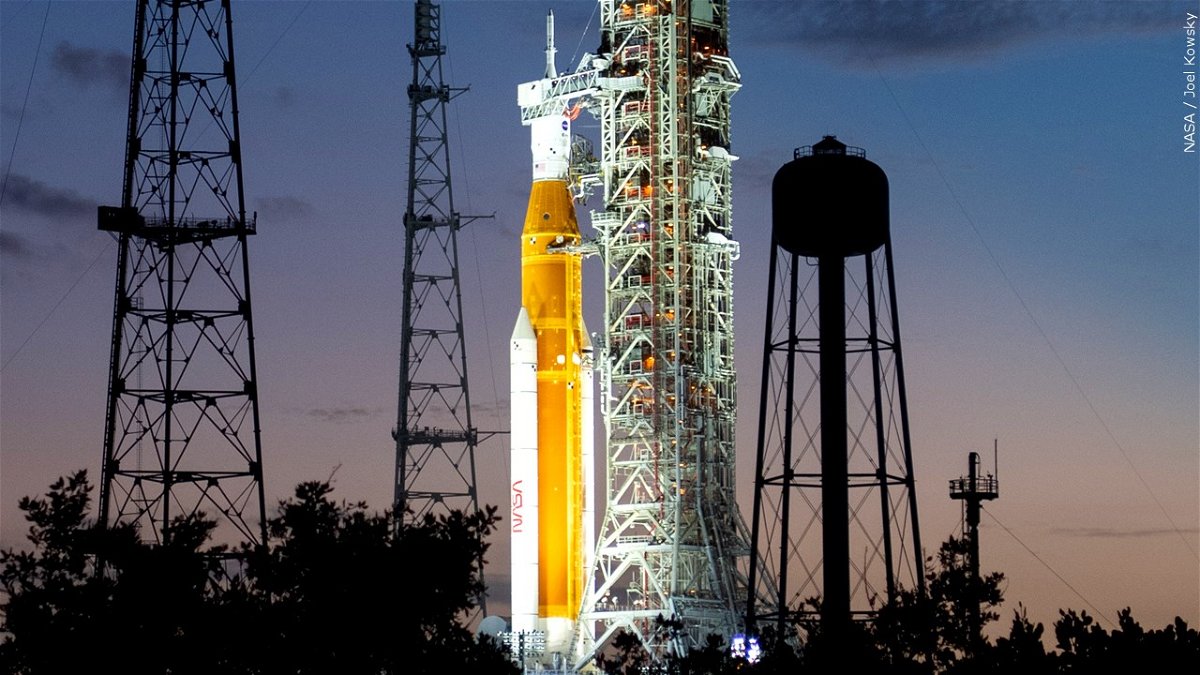Historic Artemis I mission is just beginning its lunar journey

By Ashley Strickland, CNN
(CNN) - The third time's the charm and now, NASA's mega rocket has made history.
The Artemis I mission launched on its journey to the moon Wednesday. Putting on a light show in the early morning skies over Cape Canaveral, Florida, the Space Launch System lifted the uncrewed Orion spacecraft up through the heavens.
Years of delays were followed by recurring hydrogen leak issues and two hurricanes that barreled across the rocket's home at Kennedy Space Center. Another leak nearly stood in the way of this week's liftoff, but NASA's red crew — a heroic team tasked to perform live repairs on a fueled rocket — swept in at the 11th hour.
The Artemis team members overcame the challenges thrown their way, and as the rocket launched, it felt like a moment that reignited the hopes for future exploration.
As Charlie Blackwell-Thompson, NASA's first female launch director, said: "The harder the climb, the better the view. We showed the Space Coast tonight what a beautiful view it is."
Defying gravity
Hours after the launch of Artemis I, the Orion spacecraft began to share its impressive views from space.
The capsule's cameras captured a breathtaking perspective of our planet. The images were reminiscent of those last seen 50 years ago, taken from Apollo 17 in 1972.
The Artemis I mission is speeding along on a 25.5-day journey that will loop around the moon and return to Earth on December 11. This Monday, the rocket will make its closest approach to the lunar surface. On its cosmic trek, Orion is expected to break the distance record for a human-rated spacecraft set by Apollo 13.
Follow the upcoming milestones of Orion's lunar journey using CNN's new interactive.
Going green
Many people tend to take running water for granted, assuming that when the tap turns on, it will always be there.
But this finite resource is a little more precious than it seems. Water scarcity is already an issue for billions of people, and it's growing worse amid the climate crisis.
Taking certain measures to conserve water use with your kitchen faucet, toilet, washing machine and outside your home can make a positive impact.
Find more ideas on how to minimize your role in the climate crisis in CNN's Life, But Greener limited newsletter series.
Fantastic creatures
In Kibale National Park in Uganda, a wild chimpanzee named Fiona showed her mother, Sutherland, a leaf so they could share the experience together — and scientists caught the interaction on camera.
Fiona was "leaf grooming," or touching and manipulating the leaf beforehand, a common behavior that remains a mystery to researchers. Then, Fiona showed the leaf to her mom.
"She seems to be showing it just for the sake of showing it. It's like, 'look, look, this is cool, isn't it?' And that is very humanlike and something that we thought was fairly unique to our species," said Katie Slocombe, a professor of psychology at the University of York in the United Kingdom.
Captive chimps have been observed pointing to things they want from human caretakers. But seeing social behavior in wild chimps that suggests simply "show and tell" could reveal more about how they communicate.
Curiosities
Imagine you're an ant just walking along the forest floor when spores rain down from above.
The seemingly harmless spore shower is actually a parasitic fungus that takes control of the ant's body and brain — basically turning it into a zombie.
The infected ant climbs a tree, clamps onto a dangling leaf and dies as the fungus consumes it. Then, like a scene from the movie "Alien," the parasite bursts from its host's body and releases the spores that will claim more unwitting ant prey.
But scientists have discovered a new plot twist in this horror story that might help save ants from this zombie-like fate.
Across the universe
An awe-inspiring new image from the James Webb Space Telescope shows the gas and dust released by a chaotic newborn star. Material zipping away from the star has been shaped into a cosmic hourglass.
Meanwhile, Webb has used its infrared vision to effectively peer back in time and see some of the most distant galaxies ever observed by a telescope.
The unusually bright galaxies have flipped the script on what astronomers expected and may change the way they understand the early days of the universe.
Discoveries
Need some trivia to share with friends and family over Thanksgiving? Keep these stories under your cap:
— A meteorite that landed in a family's front yard in England may explain where Earth's water came from.
— A 600-year-old English coin turned up on the coast of Newfoundland, and historians are trying to trace the journey the rare artifact took to reach Canada.
— The earliest known evidence of cooking from 780,000 years ago shows our ancient human ancestors feasted on an extinct type of fish that reached 6.5 feet long.
Speaking of feasts, the Wonder Theory team is taking some time off for Thanksgiving. We won't have a new edition for you on Saturday, November 26. But you can bet we'll be back to share all of the space and science wonders again on December 3. Until then!
The-CNN-Wire
™ & © 2022 Cable News Network, Inc., a Warner Bros. Discovery Company. All rights reserved.